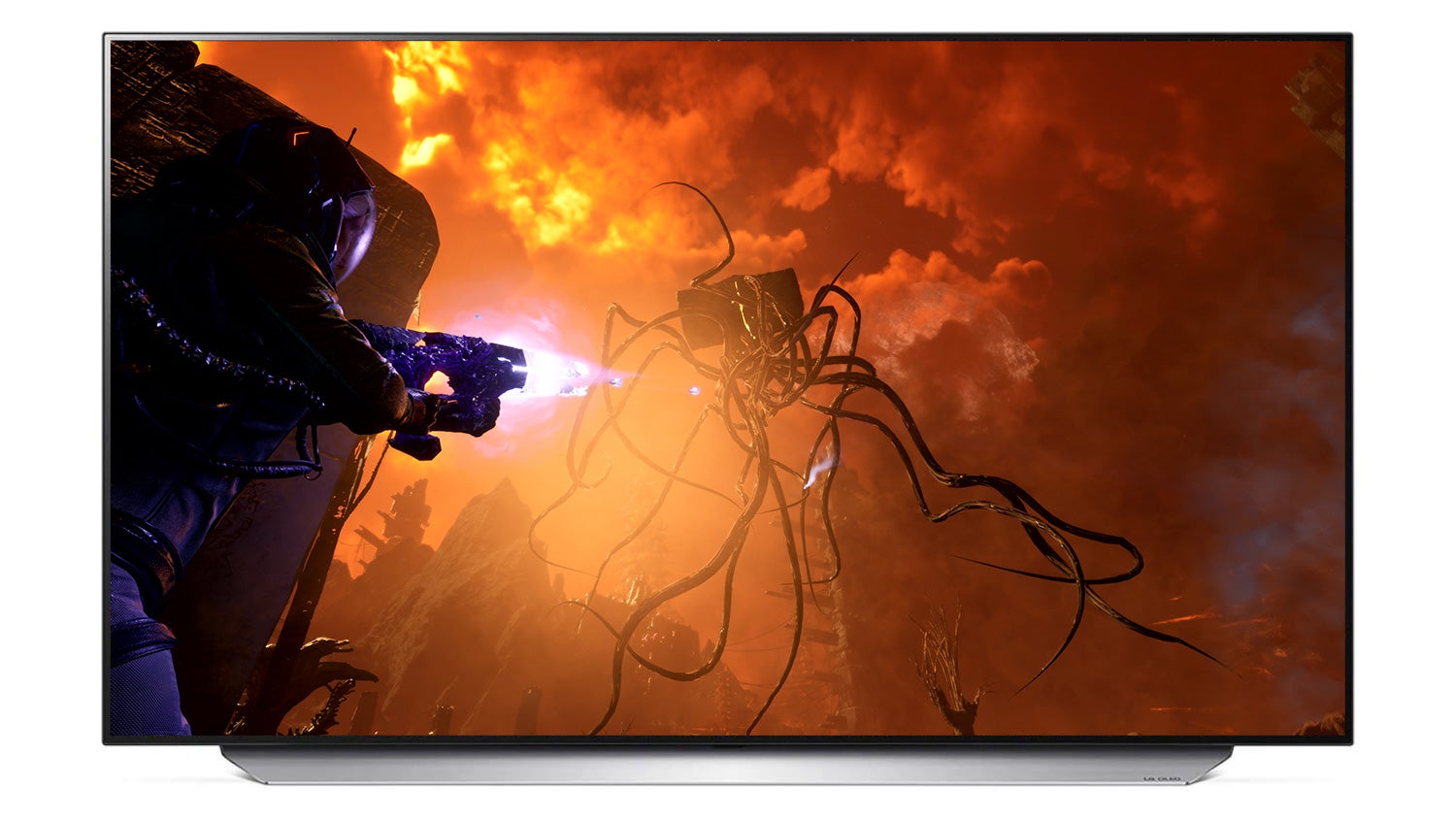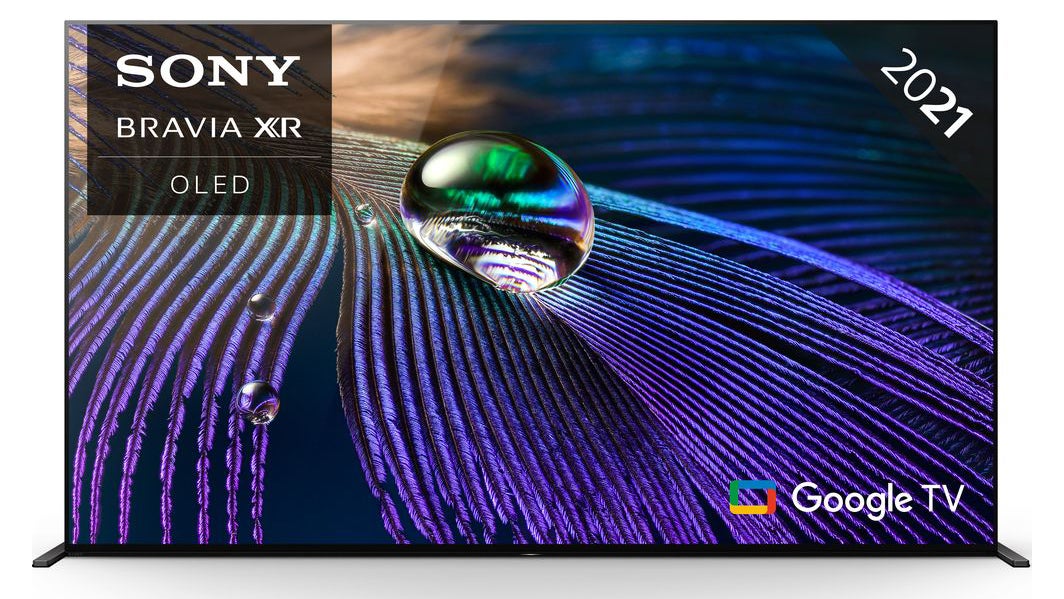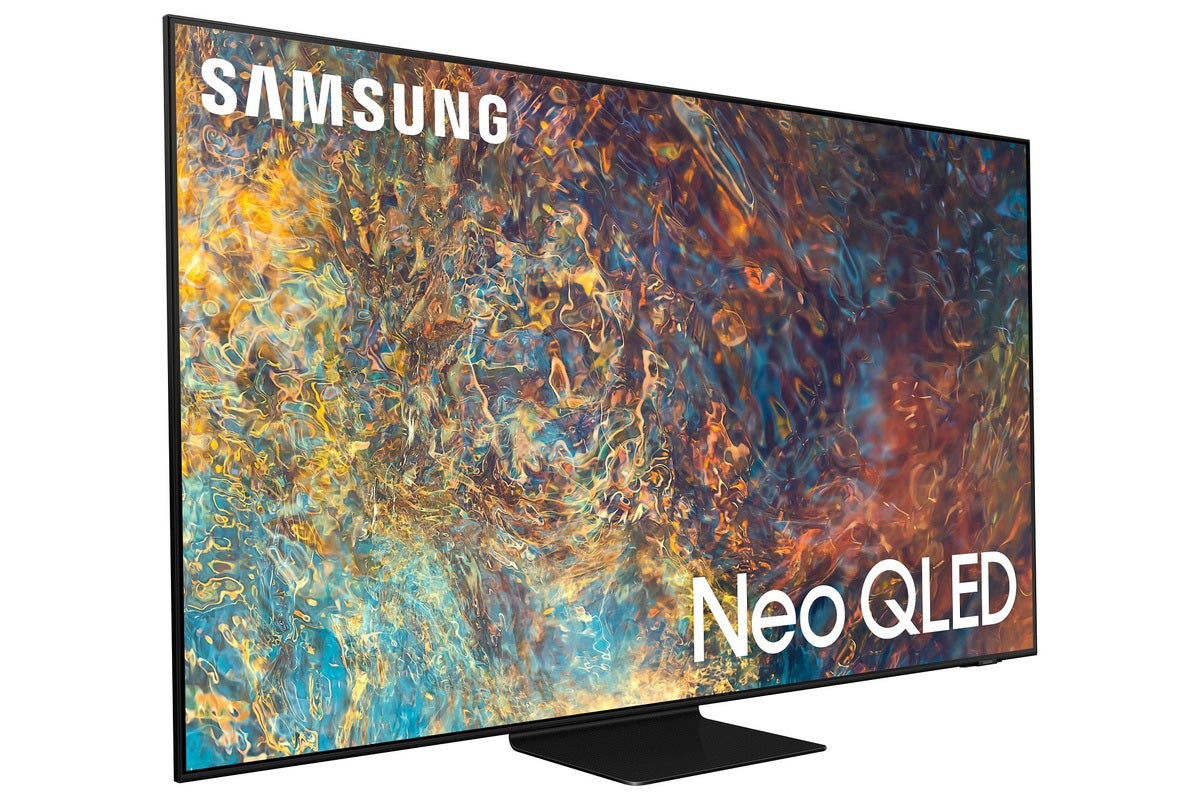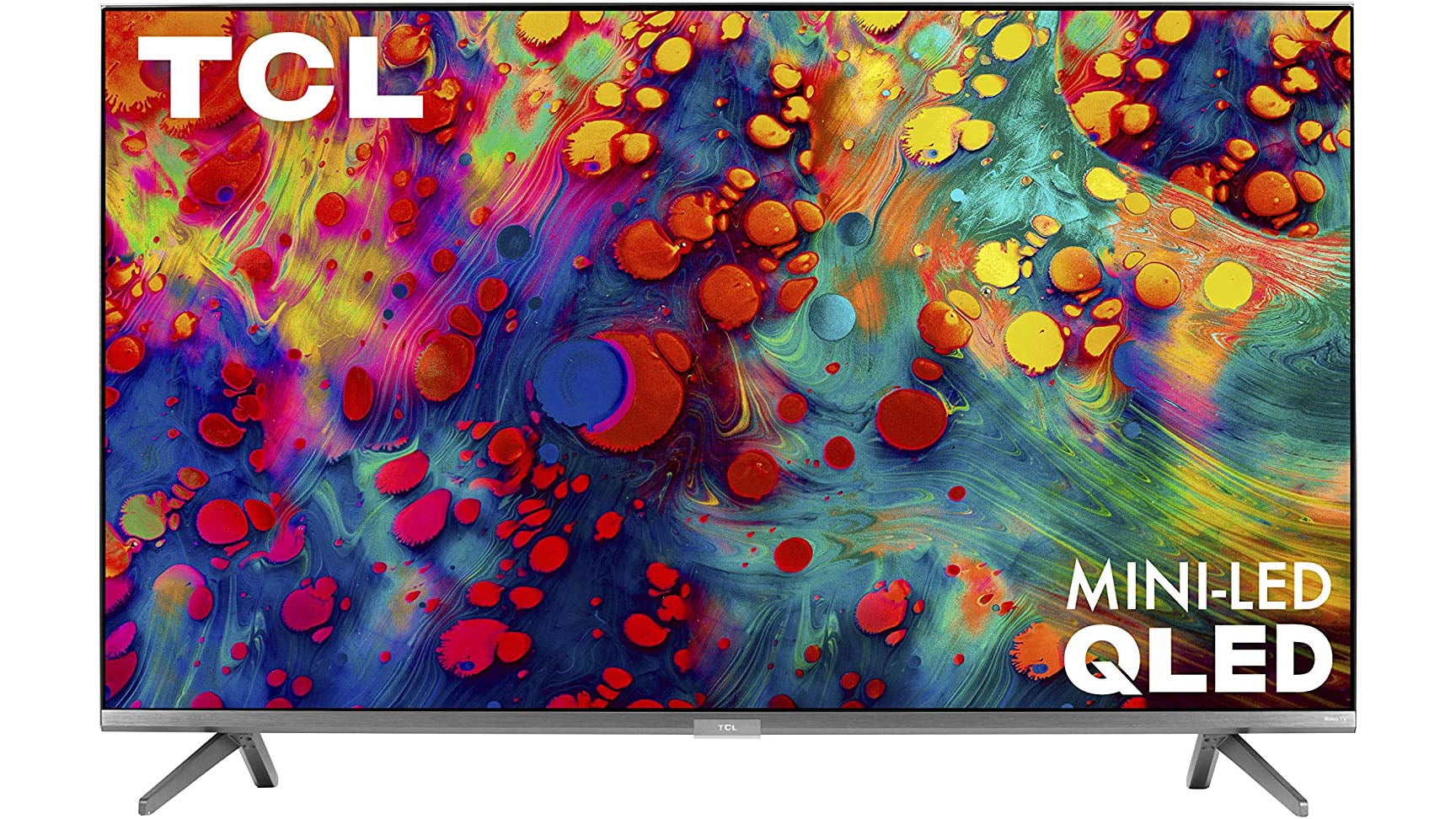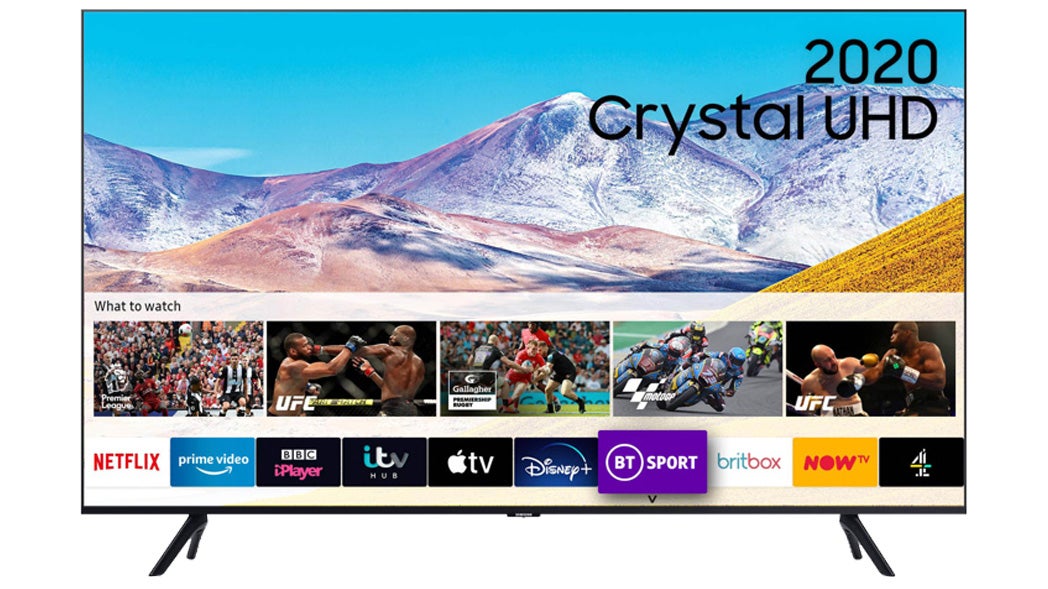When considering a 4K TV for HDR gaming, one of the most important metrics is input latency, which measures how long it takes for your buttons presses to translate into in-game actions. The best 4K HDR TVs offer input latency of around 12ms or less, average models around 20ms, and slower screens react in 30ms or more; generally a difference of about 15ms between two screens is noticeable. However, you’ll only accomplish these speeds by engaging gaming modes, which go by different names on different televisions. Auto low latency mode, which we mentioned earlier, automatically activates this mode when it’s needed. As well as input latency, we’ll also be looking at how these televisions handle motion, their peak brightness figures, which HDR formats they support and the strength of their built-in smart TV interface. Of course, price is a prime consideration as well. Right now, more expensive OLED sets start at around $1600/£1300 for a 55-inch display while LCD models at the same size can cost less than half of that amount. There are also even cheaper options that provide relatively poor HDR but still deliver a lot of screen for the money. HDMI 2.1 is another important feature we’re looking out for. This standard allows for both 8K 60Hz and 4K 120Hz content, bringing a massive boost to either resolution or responsiveness. HDMI 2.1 is an integral part of both the next-gen consoles and next-gen graphics cards, so it’s worth looking for if you’re buying a TV - especially a high-end option. We’ve recently rounded up all the 120fps PS5 and Xbox Series X/S games, including upcoming and back-compat titles. We also have our recommendations in video form, filmed in February 2020. Apart from making our TV recommendations, we’ll also let you know which features are in the pipeline and what you can expect from gaming TVs over the next year. We’ll also give a quick rundown of the four major panel types used in 4K HDR TVs - OLED, QLED, VA and IPS - so you have a basic idea of what their typical strengths and weaknesses are, in case you’re considering a TV that isn’t on this list. So these are our top recommendations for gaming-friendly 4K HDR televisions in 2021, including budget, mid-range and high-end options. Use the quick links below to skip ahead, or read on for the full selections. Remember to disable ad blockers to see prices and “where to buy” links. The C1 has four HDMI 2.1 ports, allowing for 4K 120fps gaming using a single cable on the PlayStation 5, Xbox Series X and current-gen PC graphics cards. Input lag is also extremely low, more akin to a high-end gaming monitor than a traditional 4K TV, making LG’s OLEDs a great choice even for competitive gaming. 4K HDR content is where the C1 sing, but the television also handles lower-resolution content with aplomb thanks to excellent upscaling and full OSSC and Framemeister compatibility for retro gaming. LG’s webOS software is also arguably the best available, thanks to a responsive interface that includes easy Wiimote-style selection and rapid multitasking. LG’s 2022 models look even more capable than the LG C1 and even include some more display size options, but we’ll have to test them for ourselves before we can give them the DF recommendation. In the meantime, it’s a great time to pick up a C1 or even CX model at a steep discount - you can reasonably expect to pick up a 65-inch TV released last year for less than a brand new 2022 model, and I know which one I’d rather have. Pros
Four HDMI 2.1 ports allow 4K 120fps gaming on Series X, PS5 and next-gen GPUs Extremely low input latency when using gaming modes 120Hz black frame insertion enables better motion processing Unbeatable contrast, pixel response times, colour accuracy and viewing angles Excellent scaling for lower-resolution sources
Cons
DolbyVision and HDR10 are supported, but HDR10+ is missing Burn-in possible, albeit extremely unlikely if you watch varied content No option for filter-free 720p or 1080p upscaling
Elsewhere, Sony has gotten a lot right. Motion handling is superb, as usual, and you get the usual OLED benefits - near-instant pixel response times, perfect blacks, infinite contrast, wide viewing angles and excellent colour reproduction. You also get the usual drawback - the potential for permanent image retention or burn-in, although as with other modern OLEDs this is unlikely if you vary the sort of content you use the TV with (eg you don’t watch the same channel for dozens of hours consecutively) and you keep the default safeguards engaged (including features that reduce the brightness of static elements, shift the image by a pixel and refresh the screen when it’s turned off). If you’re lucky enough to be working with a large budget, or no budget at all, the Sony A90J makes an excellent case for being the best 4K TV in the world. It only misses out on our top recommendation from some limitations in its gaming toolset (only two HDMI 2.1 ports, slightly higher input lag, no VRR yet) and its high price. Pros
Extremely bright for an OLED, thanks to LG’s second-gen OLED evo panel Excellent motion handling with 120Hz Black Frame Insertion (BFI) Two HDMI 2.1 ports allow 4K 120fps gaming on Series X, PS5 and recent GPUs It’s an OLED: perfectly deep blacks, wide viewing angles, fast pixel response times
Cons
VRR support not available at launch, but promised in a future update Slightly higher input lag than the LG C1, at 16ms (60Hz) or 12ms (120Hz) DolbyVision and HDR10 are supported, but HDR10+ is missing Burn-in remains a possibility, as this is an OLED panel
For gaming, the QN90A has HDMI 2.1 support, including auto low latency mode (ALLM) and VRR (variable refresh rate), but sadly this is limited to only a single input - so you may wish to opt for the more expensive QN95A, available in the UK and Europe only, which uses the One Connect box with four HDMI 2.1 inputs. Alternatively, you could invest in an HDMI 2.1 receiver such as the if you’d like to keep multiple next-gen consoles or PCs connected. Input lag is low, at around 10ms at 60Hz and 5ms at 120Hz. The Black Frame Insertion (BFI) feature works up to 120Hz to reduce motion blur, which can be great for fast-paced games. As well as HDMI Forum VRR, the QN90A and QN95A also support FreeSync and G-Sync technologies, so it’ll work great with PCs with Nvidia or AMD graphics cards. Pros
Support for 4K 120Hz (albeit only on one HDMI port on QN90A) Extremely low input lag in game mode Good motion handling with black frame insertion Variable refresh rate support for Xbox and PCs No risk of burn-in
Cons
Black levels and viewing angles don’t quite compare to OLED No DolbyVision support, although HDR10 and HDR10+ are supported QN95A with four HDMI 2.1 ports only available in the UK and Europe, not US
Pros
Very low input lag and two HDMI 2.1 ports Great motion handling with fast response times Impressive contrast ratio (6200:1) and excellent brightness
Cons
VRR support coming in future update Narrow viewing angles due to the VA panel used No FreeSync or G-Sync Compatible support for PC gaming
The nano IPS panel here provides wide viewing angles and great colour accuracy, but the downside is worse contrast than more common VA, QLED or OLED screens. That means this TV performs best in bright rooms and in brightly-lit scenes, as dark rooms and dim scenes will appear more grey than black. Its brightness, which is limited to around 400 nits, also means that HDR highlights don’t pop as much as they do on brighter displays. Still, the Nano85 is still a great performer at its price point, especially if your focus is gaming. If your budget allows it, the Nano90 offers a few small advantages over the Nano85/Nano86. It has full array local dimming, which means there’s less blooming around bright objects in dark scenes. The screen also gets brighter, has better speakers and offers a faster pixel response time. Pros
Excellent input lag (~15ms at 60Hz, 6ms at 120Hz) in game mode Great viewing angles, colour accuracy and All HDMI 2.1 features: HDMI VRR, ALLM and eARC
Cons
Low peak brightness and mediocre contrast
This TV’s lower price point is only really evident in its viewing angles, which result in colour shifts if you’re sitting even slightly off-centre. Motion handling is solid though, with the option for black frame insertion, while colour accuracy is also strong for its price point. Overall, this is a super strong choice for the US audience - we only wish it was available in Europe! Pros
Mini-LED backlight provides high contrast with excellent local dimming 120Hz panel, allowing 1080p or 1440p 120fps HDR gaming Variable refresh rate support via HDMI VRR Incredibly good value
Cons
No HDMI 2.1 ports for 4K 120fps gameplay Relatively narrow viewing angles No FreeSync or G-Sync support Not available in the UK or Europe
Contrast is a strong point of the TU8000, with deep blacks that allow for an impressive contrast ratio of 6500:1. Unfortunately maximum brightness is relatively low at around 300 nits, making this a poorer choice for bright rooms. The HDR10+ and HLG standards are both supported, so you’re only really missing out DolbyVision when it comes to popular HDR formats. Viewing angles aren’t great, a common stumbling block for VA panel TVs like the TU8000, but things have improved slightly from last year’s RU7100. For the price, the TU8000 is a competitive choice. However, we do suggest keeping an eye for deals on TVs like 2019’s Samsung Q60R or the 2020 Q70T and Q80T, which have more gaming features like 120Hz and FreeSync support. Pros
Excellent input lag (~10ms) in game mode Great contrast (6500:1) and good colour reproduction Auto low latency mode (ALLM) and eARC support
Cons
No 120Hz or VRR support Low peak brightness, poor banding and narrow viewing angles
Pros
Full HDMI 2.1 support for 4K 120Hz Awesome motion handling and good brightness Works with PC up to 4K 160Hz over one DisplayPort cable
Cons
Smaller screen size than the average TV No TV or smart TV functionality
Is it a good time to buy? As we mentioned in the intro, it’s a great time to upgrade to a new TV, as major HDR standards have emerged and best-in-class OLED TVs have become more affordable than ever. 2021 model year televisions are now being discounted as 2022 TVs are soon to be announced, so this is a good window to snag a bargain! The current global human malware epidemic has made finding TVs at a good price tricky. While some regions have been harder hit than others, pricing and availability has become much more variable worldwide. Therefore, if our recommendations aren’t in stock or seem unreasonably expensive, it may be best to wait a little to while until things calm down. That said, if a big TV is just what you need to get you through the crisis, then paying a small premium may still be worthwhile! One of the most important techs you’ll want to look out for is the inclusion of HDMI 2.1, a new standard that includes support for higher resolutions at higher frame-rates than ever before, including 8K 60Hz and 4K 120Hz support. As well as more raw data throughput, the new standard also includes features designed for gamers, like automatic low latency mode (ALLM), which automatically engages a game mode when a game is launched. Another important one is HDMI Forum variable refresh rate (VRR), which removes judder and makes small frame-rate drops less noticeable, without the heavy input lag penalty of traditional v-sync. Some TVs support parts of these standard with HDMI 2.0b ports, eg TVs with 60Hz panels may support VRR, ALLM and eARC without needing to support a 4K 120Hz connection. In general though, if you’re considering a four figure TV, HDMI 2.1 support should be a given. Display types With the death of plasma displays, there are two major display types used in modern displays: LCD and OLED, with LCD representing the lower and mid-range of the market and OLED the high-end. LCD displays can be broken down further too, into IPS, VA and QLED displays. Here’s what you need to know about each one, in order from cheapest to most expensive. IPS: These monitors provide good viewing angles and improved colour accuracy compared to monitors using VA panels. However, some IPS panels, particularly older ones, can suffer from slower response times, making them worse for fast-paced games. Another potential issue is ‘IPS glow’, where the monitor’s backlight is visible in dark scenes. VA: A type of monitor panel which tends to occupy a middle-ground between IPS and cheap TN displays in many respects. These panels generally offer the best contrast, backed with good response times and colour reproduction. However, viewing angles and colour gamut may be limited compared to IPS and OLED. QLED: This confusingly-named panel type from Samsung is essentially a VA panel that has been upgraded with quantum dots, allowing the monitors to produce slightly wider viewing angles than standard VA panels, plus higher brightness levels and wider colour gamuts. However, as is typical for a VA display, motion handling can be subpar. OLED: This high-end display tech uses organic light-emitting diodes which produce what is arguably the best picture. Contrast is a strong suit, as individual pixels can be turned off completely to create a true black, rather than the very dark grey that other monitor types can produce. Viewing angles are also impressive, ensuring the picture from a 45-degree angle looks as good as the screen viewed dead-on. HDR is also well catered for, thanks to the ability to see extremely light and dark areas side-by-side. However, OLED can be expensive, its brightness can’t compete with traditional LCDs and motion handling can be poor on some models. Image retention or burn-in is also a concern, although real-life OLED burn-in tests that have been running non-stop for several years show that image retention is unlikely to occur through normal use, even when gaming. Common terms Resolution: How many pixels are on screen, given as horizontal x vertical. 1920x1080 (1080p) and 3840x2160 (4K) are the most common resolutions for both TVs and monitors. The higher the resolution, the crisper and more detailed a game tends to look. Refresh rate: How many times the screen updates per second, given in Hz. Standard TVs refresh at 60Hz, while more modern TVs can achieve 120Hz at some resolutions. For 4K at 120Hz, a TV needs to support the HDMI 2.1 standard. The higher the refresh rate, the more fluid a game will feel. Response time: This stat typically measures how fast a pixel can turn from grey to white and then back to grey again. The best displays sport pixel response time figures of less than 4ms, with TN and fast IPS panels offering a quoted 1ms GtG and VA and regular IPS screens likely to achieve higher figures. OLED displays can achieve near-instant response times. Low response times help to eliminate distracting smears in fast-paced scenes. Note that response time is distinct from input lag, which refers to the delay between an input (like pressing a button) and seeing the effect of the input on-screen. Contrast ratio: Simply the ratio between the brightness of a display when it is displaying perfect black versus perfect white. Around 1000:1 is typical for an IPS display, a VA display can hit 3000:1 or higher and an OLED has technically infinite contrast, as its organic LEDs can switch off entirely to create a completely dark image. High contrast ratio screens look particularly good in dark rooms, as blacks will appear properly black rather than dark grey. When a high contrast display also has high peak brightness levels (eg 600 nits and up), HDR content will look punchier too. HDMI VRR, G-Sync and FreeSync: These terms refer to adaptive sync technology, designed to eliminate ugly screen-tearing and judder while adding less input lag than traditional v-sync. G-Sync is Nvidia’s implementation and FreeSync is the AMD alternative, while HDMI VRR is a slightly more neutral standard implemented by the HDMI Forum with HDMI 2.0b and HDMI 2.1. A TV can support one, some or all of these standards. HDR: High Dynamic Range allows for greater contrast between the lightest and darkest parts of an image, as well as a wider colour gamut. There are various video formats that go beyond vanilla HDR10, including DolbyVision, DisplayHDR 400/600/1000/1400 and HLG. Some videos will only be offered in a certain format, while others may be available in multiple formats. Choosing a TV that supports at least one of these formats mean you’re more likely to see HDR content as intended when streaming video or playing Blu-Rays. Got a question we didn’t cover? Please ask us in the comments below or reach out to me on Twitter @wsjudd.
